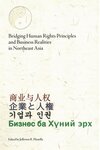Ara v. Uttar Pradesh, A.I.R. 2002 S.C. 3551; Singh v. Ramendri Smt., A.I.R. 2000 S.C. 952; Satpathy v. Dixit, A.I.R. 1999 S.C. 3348; Sesharathamma v. Manikyamma, (1991) 3 S.C.R. 717; Kaushal v. Kaushal, A.I.R. 1978 S.C. 1807. The Court did this when interpreting the Code of Criminal Procedure: ''The brood presence of the constitutional empathy for the weaker sections like women and children must inform interpretation if it [is] to have social relevance. So viewed, it is possible to be selective in picking out that interpretation out of two alternatives which advance the cause - the cause of the derelicts.'' Singth v. Ramendra Smt., A.I.R. 2000 S.C. 952 (quoting Kaushal v. Kausha, A.I.R. 1978 S.C. 1807)
(found in ''Women and Law: A Comparative Analysis of the United States and Indian Supreme Courts' Equality Jurisprudence'' by Eileen Kaufman, Georgia Journal of International and Comparative Law, Vol. 34, No. 3, p 590-591)India: The Indian Supreme Court, when interpreting ambiguous laws, has interpreted them in favor of women.
No TrackBacks
TrackBack URL: https://www.hurights.or.jp/movable7-4/mt-tb.cgi/154








Leave a comment